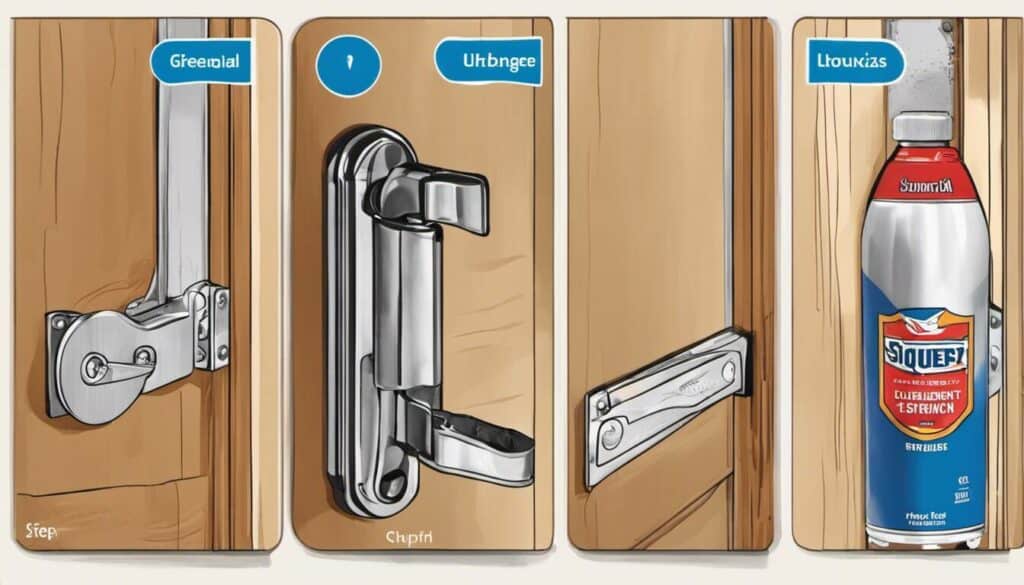When the essence of home decor met the need for safety, I found myself at a crossroads. Struggling with the ongoing issue of power outlet placement in my home, I realized change was necessary after having a party of 10 over one night. I share how I reevaluated my home’s power outlet placement drawn from personal experience after this event. This comprehensive guide will empower you to transform your outlet placement drama into a melodious symphony of style and safety!
Proper power outlet placement is essential for safety and convenience. Considerations should include local electrical codes, room layout and furniture placement, proximity to water sources, adequate amperage for the intended usage, and future-proofing for potential technology or equipment upgrades. Consulting with a licensed electrician can ensure that your building meets all necessary safety standards and preferences. This is especially important when dealing with complex electrical tasks such as wiring a light switch.

“The crux of achieving a balance between safety and aesthetics lies in one’s understanding of the home’s electrical infrastructure. You can maintain safety without sacrificing style by subtlety hiding your power outlets, use furniture or decor pieces to obstruct them partially, or opt for decor-friendly outlet covers. Remember, your safety is paramount, let everything else, including style, follow it.”
Theodore Holmstead, Certified Interior Designer
The Importance of Power Outlet Placement
Power outlet placement is a crucial consideration when it comes to electrical safety and home decor. The strategic positioning of outlets throughout the home not only ensures convenience but also plays a vital role in maintaining the safety of your electrical systems. Proper placement helps prevent cord stretching, eliminates potential hazards, and enhances the functionality and aesthetics of your living spaces.
Imagine having to stretch a power cord across a room just to charge your phone or plug in a lamp. Not only is this inconvenient, but it can also create tripping hazards and increase the risk of electrical accidents. On the other hand, well-placed outlets provide easy access to power sources, allowing you to conveniently use your electronic devices or appliances without inconveniences or safety concerns.
With the importance of power outlet placement in mind, let’s now delve into considering safety and convenience when determining where to position these essential fixtures in our homes.
- According to the NEC (National Electrical Code), outlets in general living areas should be arranged such that no point measured along the floor line of any wall space is more than 6 feet from an electrical outlet. This recommendation helps ensure convenience and safety.
- In kitchens, the NEC sets stricter guidelines, specifying that countertop outlets should be spaced no more than 48 inches apart to avoid stretching appliance cords too far, reducing the risk of accidents.
- Code also mandates tamper-resistant outlets in various areas of a home, including general areas, bathrooms, and kitchens, offering substantial protection against electrical injuries; about 2,400 children suffer from shock and burns each year due to tampering with electrical outlets, according to Electrical Safety Foundation International (ESFI).
- Proper power outlet placement is crucial for electrical safety and home decor. The strategic positioning of outlets throughout the home helps prevent cord stretching, eliminates potential hazards, enhances functionality, and improves aesthetics. Well-placed outlets provide easy access to power sources, making it convenient to use electronic devices or appliances without any safety concerns. When determining where to position power outlets, safety and convenience should be considered.
Considering Safety and Convenience
When planning power outlet placement, it’s vital to strike a balance between safety and convenience. Ensuring that outlets are positioned strategically helps minimize potential risks associated with electrical systems while providing ease of access for everyday use. However, it’s important to be aware of the hidden costs of DIY projects when considering electrical work, as improper installation can lead to safety hazards and expensive repairs.
For instance, adhering to electrical codes by placing GFCI-protected receptacles in areas prone to water contact such as kitchens, bathrooms, and garages can significantly reduce the risk of electric shock. Likewise, spacing outlets appropriately in general living areas prevents any point from being more than 6 feet away from a receptacle outlet, offering convenient access to power sources throughout the room.
Moreover, convenience should be prioritized when determining outlet placements based on your lifestyle and specific needs. Consider placing outlets near doors for vacuum cleaners or behind furniture for easy access without compromising aesthetics. Think about locations where you frequently use lamps or other corded devices so that they can be powered without inconvenience or unsightly cord visibility.
Picture a living room with carefully planned outlet placements behind the television stand or near seating areas for hassle-free access to power sources. This not only enhances the functionality of the space but also eliminates the need for unsightly extension cords running across the floor.
As we navigate the realm of power outlet placement, we must strike a balance between safety and convenience. By considering both aspects, we can ensure not only the smooth functioning of our electrical systems but also create a visually appealing and practical living environment.
Decor-Friendly Outlet Solutions
When it comes to home decor, power outlets often pose a challenge. Standard outlets and their visible cords can disrupt the aesthetic harmony of a well-designed space. However, there are several decor-friendly outlet solutions that can seamlessly blend with your interior design.
One popular option is recessed outlets, also known as in-wall outlets. These outlets sit flush with the wall, minimizing their visual impact. They can be painted to match the wall color or covered with wall plates that complement your decor style.
Another solution gaining traction is pop-up outlets. These outlets remain hidden when not in use and can be discreetly popped up from kitchen countertops or desks when needed. They provide both functionality and a sleek appearance.
Additionally, floor outlets are an excellent choice for spaces where access to power is needed without visible cords. These outlets are installed directly into the floor and can be concealed under furniture or rugs to maintain a clean look.
By incorporating these decor-friendly outlet options into your home design, you can enjoy both electrical convenience and an aesthetically pleasing environment.
Outlet Requirements for Different Home Areas
To ensure electrical safety and compliance with regulations, different areas of the home have specific outlet requirements. It’s crucial to keep these guidelines in mind when planning outlet placements.
In kitchens, countertop outlets should be spaced no more than 48 inches apart to prevent cords from stretching too far. Moreover, they should not be positioned higher than 20 inches above countertops. Additionally, GFCI protection is required for kitchen countertop outlets to reduce the risk of electrical shock near water sources.
Bathrooms also have specific outlet requirements for safety reasons. There must be at least one GFCI-protected receptacle within three feet of the outside edge of the sink basin. Outlets should be placed above the countertop or on the side of the sink to avoid contact with water sources.
For general living areas, such as bedrooms and living rooms, outlets should be spaced in a way that ensures no point measured horizontally along the floor line of any wall space is more than 6 feet away from an outlet. However, outlets can be spaced more closely if desired.
Hallways longer than 10 feet should have at least one electrical outlet, preferably at the midpoint. This is to ensure accessibility for vacuum cleaners or other electrical devices.
Understanding and adhering to these outlet requirements for different home areas is essential for both functionality and safety purposes.
NEC Guidelines for Outlet Spacing
When it comes to the placement of power outlets in your home, it is crucial to adhere to the guidelines set forth by the National Electrical Code (NEC). These guidelines ensure both electrical safety and convenience within your living spaces. NEC guidelines dictate that outlets should be placed at regular intervals throughout a room, so that no point along a wall is more than six feet away from an outlet. This spacing requirement ensures easy access to power sources and helps prevent potential overload situations.
Imagine setting up your home office space and realizing that the only available outlet is on the opposite side of the room. Not only will this inconvenience you every time you need to plug in a device, but it can also lead to unsafe practices such as using extension cords inappropriately or overloading existing outlets.
By following NEC guidelines for outlet spacing, you can avoid these issues and create a safer environment within your home.
Now that we understand the importance of following NEC guidelines for outlet spacing, let’s move on to consider how you can plan your outlet placement effectively.
Planning Your Outlet Placement
When planning where to place your power outlets, there are several factors to consider. First and foremost, consider the functionality of each room. Identify areas where you will need frequent access to power sources, such as near workstations, entertainment centers, or kitchen countertops.
Next, take into account the size and layout of the room. Larger rooms may require more outlets to ensure convenient access from various locations. Additionally, consider furniture placement and whether any fixtures or appliances will require dedicated outlets.
It’s also worth considering future needs. While it’s essential to meet current electricity requirements, anticipate potential changes or additions to your living space. Providing extra outlets for future use can save you from costly modifications down the line.
To simplify your planning process, you can create a rough drawing of each room and mark out potential outlet placements. Take into account the spacing requirements outlined by the NEC and ensure that outlets are easily accessible without creating clutter.
By thoughtfully planning your outlet placement, you can not only ensure electrical safety but also enhance the functionality and convenience of your living spaces. Having the right toolbox essentials can make this process smoother and more efficient.
Avoiding Electrical Overloads
In the realm of home decor and electrical safety, it’s crucial to consider the potential for electrical overloads. An overload occurs when too many devices or appliances are drawing power from a single circuit, surpassing its designated capacity. This poses serious risks such as overheating, fire hazards, and damage to electrical systems. To avoid electrical overloads, it is important to be mindful of the amperage of outlet receptacles and match them with the amperage of the circuit they serve. Additionally, follow the guidelines set by the electrical code when it comes to outlet spacing in different areas of your home. Ensuring that outlets are conveniently placed where they are needed can prevent the excessive use of extension cords and power strips, which can contribute to overloaded circuits.
Solutions for Outlet Placement Challenges
When it comes to outlet placement challenges, there are several solutions that can help ensure both electrical safety and home decor aesthetics. One option is retrofitting existing outlets to be more strategically placed throughout your home. This involves hiring a licensed electrician who can assess your current wiring system and install new outlets in areas where they are most needed. This solution allows you to customize outlet placement according to your specific needs without compromising on safety.
Another solution is using extension solutions such as cord concealers or raceways. These provide a clean and organized way to extend power to areas where outlets might not be easily accessible or where additional outlets cannot be installed. Cord concealers can be used along baseboards or under carpets to hide and protect unsightly cords while ensuring they do not pose a tripping hazard.
For instance, if you have a desk in your home office that requires power for multiple devices such as a computer, printer, and lamp, but there are no outlets nearby, a raceway or cord concealer can be used to discreetly extend power from an existing outlet along the wall and up to the desk surface.
It’s important to keep in mind that when using extension solutions, always follow safety guidelines and ensure proper installation to prevent potential hazards. Regularly inspect cords and outlets for any signs of wear or damage, and avoid overloading extension cords or power strips.
While retrofitting and extension solutions can be effective, it’s also worth considering future-proofing your home by strategically planning outlet placement during construction or renovations. This allows you to anticipate future electrical needs and ensures that outlets are conveniently located for efficient use. For instance, you might want to consider the potential need for a whole house generator when planning your electrical system.
Retrofitting and Extension Solutions
When it comes to power outlet placement, sometimes you may find that your home doesn’t meet your needs. You might discover that there aren’t enough outlets in certain areas, or perhaps they’re positioned in inconvenient locations. In such cases, retrofitting and extension solutions can be a game-changer.
Retrofitting involves making modifications to existing electrical systems to accommodate new outlet placements. This process typically involves installing additional wiring and outlets in desired areas. For example, if you find that there are limited outlets in your kitchen, retrofitting can help by adding more outlets along the countertop or near your appliances.
Imagine this scenario: You love cooking, but every time you want to use your blender or food processor, you have to stretch the cord across the kitchen because the outlets are not conveniently located. Retrofitting can solve this dilemma by strategically placing new outlets within reach of your kitchen appliances.
In addition to retrofitting, extension solutions provide alternative ways to increase the number of outlets in specific areas without significant modifications to the electrical system. Extension solutions include using power strips and surge protectors, which allow multiple devices to be plugged into a single outlet. These can be particularly useful for areas like home offices or entertainment centers where many electronics need access to power.
Whether you choose retrofitting or extension solutions depends on various factors such as the extent of electrical work required, budget constraints, and personal preferences. It’s also important to consider safety measures during any modifications made to the electrical system. In some cases, you might even consider installing a generator for your house to ensure continuous power supply during outages.
Think of it like rearranging furniture. Sometimes, you need to move pieces around or add new ones to create a space that is functional and aesthetically pleasing. Retrofitting and extending power outlets operate on a similar principle – they allow you to customize your home’s electrical setup according to your needs and preferences.
While these solutions can be effective, it’s crucial to consult with a qualified electrician before making any changes to your electrical system. They have the expertise to assess your home’s electrical capacity, ensure compliance with local codes, and execute the necessary modifications safely.
Retrofitting and extension solutions provide practical ways to enhance power outlet placement in your home. Whether it involves adding new outlets or utilizing power strips, these solutions allow you to create a more functional and efficient living space. Remember to always prioritize safety by consulting with professionals when making electrical modifications.





In my 30 years of experience, I’ve found that strategic power outlet placement is the true unsung hero of successful room design.
From my experience as an electrical engineer, planning for power outlet placements during the architectural phase itself saves a lot of hassle later on and results in a much cleaner look.
As a lover of minimalistic design, I always try to camouflage power outlets behind furniture or use paintable covers that blend them seamlessly with the wall color.
Consider power outlets like beauty spots on a face; instead of hiding them, incorporate them creatively into your space’s overall aesthetic, turning potential eyesores into points of interest.
Taborsky, I appreciate your metaphor! In some of my own work, I’ve found ways to turn power outlets into elements that fit seamlessly within the overall design narrative – like a beauty spot indeed!